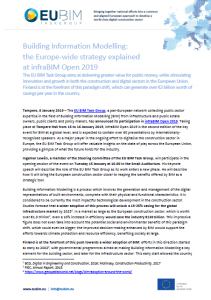EUBTG General Assembly Dec-2022
On December 7th 2022 the EU BIM Task Group held it’s annual General Assembly meeting on-line which was attended by 32 people representing 20 countries.
The meeting was moderated by Souheil Soubra and opened with an introduction from Mrs Katharina KNAPTON-VIERLICH, Head of Construction Unit at DG-GROW. Ilektra Papadaki and Pieter Staelens from DG GROW presented some of the European Commission initiatives supporting the digital transition of the construction industry. 11 members also presented their national perspectives regarding BIM/Digitalisation. During the meeting the EUBTG also elected a new management team consisting of Jaan Saar (Chair), Milena Feustel (Deputy chair) and Jaroslav Nechyba (Deputy chair).
Watch the recording of the meeting on our YouTube channel:
Agenda:
- 10:00-10:05 Welcome and introduction by Souheil Soubra, chair of the EU BIM Task Group
- 10:05-10:15 Introduction by the Head of Construction Unit at DG-GROW Mrs Katharina KNAPTON-VIERLICH
- 10:15-10:30 Appointment of the Chair and Deputy chairs. Process for new Steering Committee
- 10:30-11:00 Presentation by Ilektra Papadaki & Pieter Staelens (DG GROW) of the HLCF and the transition pathway along with logbooks and upcoming workstream on BIM and digital building permits (download PDF).
- 11:00-11:45 Presentation of national perspectives regarding BIM/Digitalisation
- 11:45-12:00 Suggestions for 2023 actions and AOB
Participation to the BIM Global Network
Detailed recap of the GA meeting
1) Welcome and introduction by Souheil Soubra, chair of the EU BIM Task Group
Souheil Soubra welcomes the participants by explaining that the General Assembly (GA) is held online this year again, but it will probably be held in person next year.
He then presents the agenda which was adopted.
After acceptance of the participants, it was decided to record the GA so that the recording can be made public.
2) Introduction by the Head of Construction Unit at DG-GROW Mrs Katharina KNAPTON-VIERLICH
The introduction is then made by Mrs Katharina Knapton-Vierlich who has been appointed new head of the construction unit at DG-GROW recently. She explains that she has met several members of the EU BIM Task Group (EUBTG) in Prague, at the beginning of November and she has been impressed by the implication and the work already done by the group. She was before in charge of the Public Procurement’s unit in DG GROW. She notes that both construction and procurement struggle with digitalisation. Several projects have been launched in the procurement area by including BIM as digitalisation is a mean to several ends, including transparency, cooperation, calculation, etc. The exchange of views and projects made possible by the EUBTG, is very important, as the public sector needs to learn by example. In this way, the European Commission (EC) assists the public sector by putting in place training sessions, supporting the development of national strategies in several Member States (Spain, Estonia, Poland, etc.). She stresses that the EC will continue to support the Member States (MS). As an example, a webinar on the Public Buyers club was held yesterday and the initiative will be launched in February.
She finishes her speech by thanking the current chair and wishing good luck to the new team that will be appointed. She concluded by saying that the EUBTG is a privileged partner in developing strategies in digitalisation of construction and it can count on the collaboration and cooperation of her team.
Souheil Soubra thanks Katharina Knapton-Vierlich for her promising speech, the involvement of DG-GROW and her kind words about the group.
3) Appointment of the Chair and Deputy chairs. Process for new Steering Committee
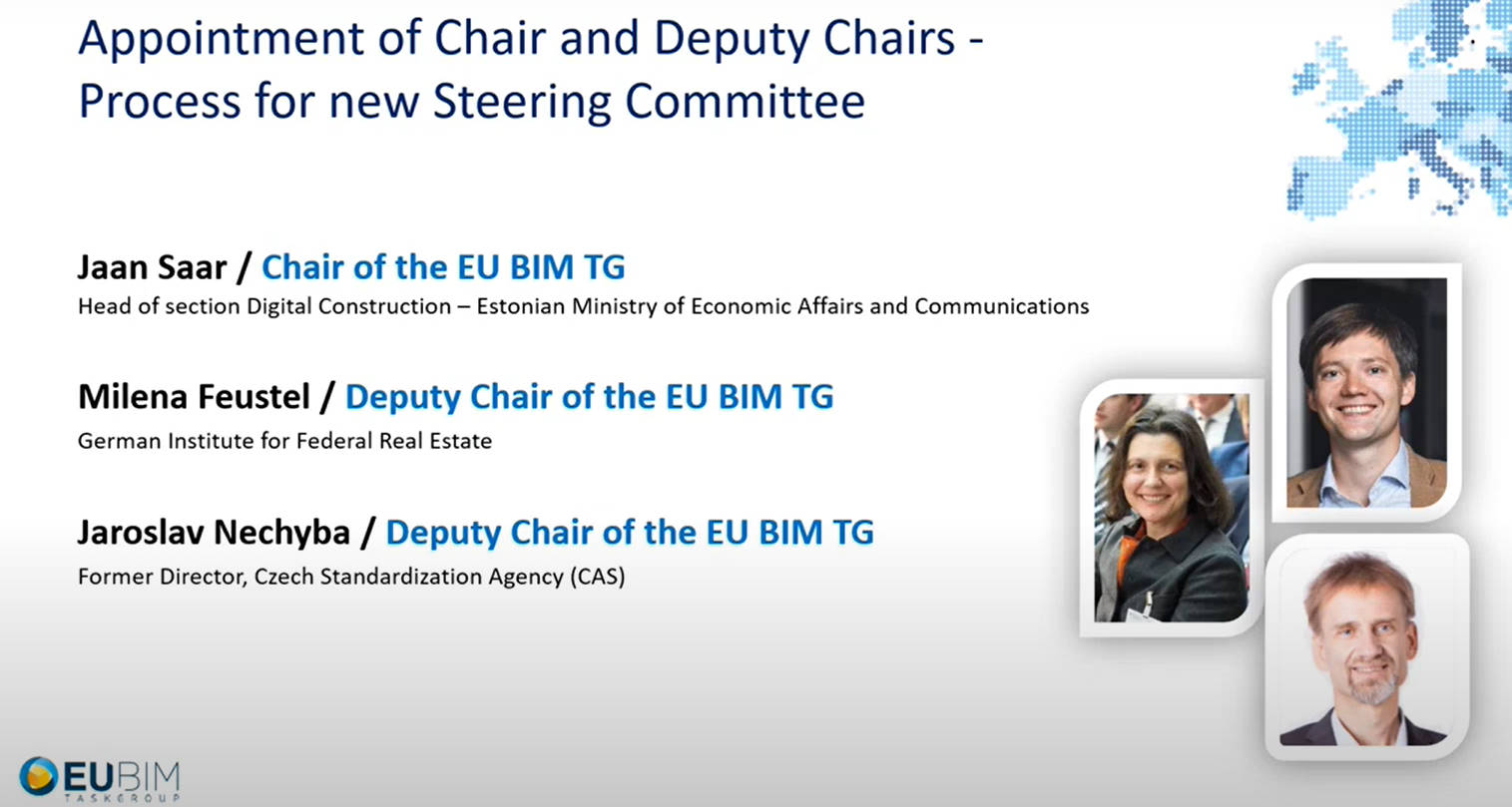
Souheil Soubra reminds the participants that he has been acting as chair for four years. Knowing that the term of office of the Chair and the Deputy Chairs is two years and the term can be renewed only once, it means that he needs to step down and the group needs to appoint a new Chair and 2 vice chairs.
The Steering committee discussed this issue and have a proposition to make to the GA. After some discussions, Jaan Saar agreed to act as chair and Milena Feustel and Jaroslav Nechyba agreed to act as vice-chairs. Souheil Soubra says that he personally vouches for this option that will allow the EU BIM TG to have a great team as chairs.
The proposition is approved by the GA and by unanimity.
Ksenija Marc, Liana Anagnostaki and Pietro Baratono thank Souheil Soubra for his great implication.
Jaan Saar thanks Souheil Soubra for being chair for four years in difficult times. He also thanks everyone for the support for the new team. He is sure that it will be a team effort with Milena Feustel and Jaroslav Nechyba. They aim to reset the EUBTG and be able to meet in person again.
He finds that the EUBTG roadmap is a good document, but it was done a while ago and needs to be revisited as new actions have been launched at European level such as the Public Buyers club that could overstep the EUBTG actions.
Milena Feustel and Jaroslav Nechyba fully support the idea to give opportunity to new members who have time to be active in the SC and looking forward to many applications, as the EUBTG has to find ways to be more involved in actions launched notably by the DG GROW, which is one of the main partners.
According to Jaan Saar, the new application process to the SC will be put in place shortly in order to have motivated people involved who have time to contribute to the actions of the group. He recalls that it is a voluntary group up to now and it is difficult to ask to be active. That is why it is important to know what the members are doing in their daily work and see how it could be aligned with the EUBTG work. The precise process will be known very soon, and a form will be sent shortly after. An extraordinary GA will be held at the beginning of next year hopefully in person to endorse it.
4) Presentation by Ilektra Papadaki & Pieter Staelens (DG GROW) of the HLCF and the transition pathway along with logbooks and upcoming work stream on BIM and digital building permits.
Ilektra Papadaki congratulates the new Chairs and looks forward to continuing the great collaboration.
She then presents the construction transition pathway. Fourteen industrial ecosystems, which go beyond the concept of sector, have been defined in order to take into account more partners. The construction ecosystem is the second one in terms of size.
DG GROW is in charge of speaking with the industry through different initiatives such as a communication platform for example. It is very open to discussion and welcomes everyone involved in construction.
The construction transition pathway is a novelty. Scenarios were published last year in December followed by an important number of thematic meetings this year based on the stakeholders’ needs and European strategies. The publication of the roadmap will take place in February 2023 followed by a public presentation.
The main areas of the construction policy at European level are, as we know, competitiveness, resilience, green and digital transitions. The main action points focus on supporting SMEs and enabling the green transition. In this context, digitalisation is seen as an enabler and the EC have had extensive discussions on the role of BIM to play in this matter. The roadmap will have several chapters on skills and professionalization, safe building (including fire safety, asbestos, timber quality…) or needs and R&I.
Pieter Staelens continues the presentation on the Digitalisation of the construction sector by presenting three European initiatives.
Digital Building Logbook (D-Blog)
Some studies on this subject were made before and a Horizon Europe financing has been granted for demonstration.
A technical study for 2022-2023 has been launched recently to better understand what is needed in terms of format through tests in several Member States in order to be able to provide guidance for future implementation. The main goal is to create harmonization and move towards interoperability between current and future platforms (ex. DPEB platform or CPR).
The main steps of the study are the review of existing databases and resources; the establishment of a framework for an EU digital building logbook (semantic data model, dictionary…); the proposal for an EU gateway interface and a costs and benefits analysis on implementing the EU DBL framework.
To the question of Souheil Soubra on how the EU portal is linked to national initiatives, Pieter Staelens explains that, in fact, it is part of the study to implement a portal and a visual identity, but it is not in place for now. Links to national initiatives will be available and, if possible, we will be able to search on member states D-BLog.
Digitalisation of SMEs
The purpose of this initiative is to make it very simple to show to SMEs the advantages and the first steps in tackling these new technologies, notably through a website and trainings session until March 2023.
Digitalisation of the built environment initiative
It is an 18-month contract for 2023-2024. It consists of several steps:
– Digitalisation of building permits
– BIM analysis of EU27 through evaluation matric (SWOT analysis, BIM maturity, BIM use, bottlenecks, openBIM, actions toward SMEs, etc.), guidance for future actions and support through a Community of Practice put in place at the launch of the project
– Beyond DigiPLACE and towards an EU Data Space in order to further built the case by doing a cost and benefits analysis.
To the question of Jaan Saar on the Public Buyers club and how to connect with the EUBTG work, Pieter Staelens recalls that first, it was decided the creation of a community of big buyers, but the EC noted that the target audience was broader. From March 2023, the EC will provide this opportunity to support the community, but it will be self-governed. People will have to act as community leader or topic leader, moderation, etc. DG GROW is looking for partners to take some certain roles, and the EUBTG could be one of them.
According to Jaan Saar, it is important to connect the two groups and it seems necessary to have a dedicated meeting before to avoid overlaps.
Ilektra Papadaki adds that she understands why it raises some doubts among the EUBTG members around overlaps. Nevertheless, the group is not anymore for big buyers only but for all public buyers in order to also target individual public buyers (such as municipalities) whereas in EUBTG, the members are mostly from national agencies and ministries.
5) Presentation of national perspectives regarding BIM/Digitalisation
Souheil Soubra introduces the last session by saying that is important to make members know what is happening in all the European countries as this question is raised often and needs to be updated regularly.
EE: the main initiative highlighted is about a BIM based building permit in order to get structured data usable by more stakeholders (municipalities, owners, etc.). This can have a huge impact on speed and quality of applications’ review. With smart tools, it can be done effectively since municipalities do not have enough man load to do it manually currently.
IT: the main initiative is the revision of Public Procurement legislation as one of the Recovery and Resilience Facility targets. The new legislation put in place next year is based on four pillars: digitalisation, project management, risk management and asset management. BIM design will become mandatory, except for ordinary and extraordinary maintenance. Discussion about bridge BIM logbook and all infrastructures is also taking place. Download the draft coordinated text of Italian “digital” legislation (in yellow the modifications introduced by Decree 312).
DE: a real push on digitalisation has been made through federal plan and financing innovative projects. The idea is to achieve all milestones of the federal masterplan in 2025. In terms of actions, a BIM federal portal to find requirements for using BIM in PP process has been launched in October at federal level first and other levels further. Germany also focuses on the promotion of international standards. In 2023, a module on employees BIM requirements will be launched in Spring and others are coming.
Milena Feustel completes by indicating that construction and infrastructures sectors have a joint journey, which is very positive and more effective.
CZ: National BIM strategy allowed to move from “Why” to “How”. Several pilot projects have been launched to put in daily practice the use of digital tool, to collect inputs and create guidance documents based on standards.
The first step of legal procedure is ongoing to make BIM mandatory for buildings and construction sector through a law and the drafting of the corresponding requirements.
FR: After six months of development, a new tool named Orelie has been launched, at the end of 2021, by the French BIM Deployment Plan. This tool is a free platform meant to assist in the drafting of BIM specifications that has been co-built with the different stakeholders of the building sector. It is aimed at all clients, regardless of the size of their structure, their level of maturity in BIM or the type of their operations, whether in construction or renovation (https://www.orelie-bim.fr/).
NL: The work focuses on the development of standards to share data/information, the Digital twining and the modelling of BIM asset management. The authorities are also interested in all international developments through CEDR works for example. See PDF slide for more details.
NW: The second generation of building permit process is ongoing, but the documents are still in PDF format. It is a challenge to make the public services and the industry change their habits. The main problem is to be able check if the information is missing, which is possible through BIM model but not with PDF.
The implementation of automatic BIM checking is slow as it is complicated to convince people of the utility of this very technical tool.
EL (GR): The ministry has launched a strategic roadmap financed by the EC. It will be completed in April 2023 and it aims at the effective adoption of BIM in Greece. It is composed of several parts: three pilot projects, legislation, communication effort toward stakeholders, education programs, specifications and financial tools for companies to finance the digital transformation.
Two Greek projects including BIM are also mentioned such as the Ellinikon (https://theellinikon.com.gr/en/homepage/) and Athens Metro Construction Line 4 Section A (https://www.ametro.gr/?page_id=8643&lang=en).
ES: The national administration level supports the digital reform of the country through several means, in particular the launch next year of a BIM national plan and the publication of technical documents to support it, which include a general view on BIM to convince that BIM is useful, BIM requirements and BIM tenders. Some major investments in infrastructures are currently made including BIM requirements.
The spread of BIM technologies is not only at national level but also at local level. Currently, 300 PP contracts were made with BIM at national level (with the goal of 550 contracts to reach) and more than 100 contracts were made in the municipalities.
LT: The strategy developed for public procurers and focuses on standards, communication, requirements, quality control on construction site and education seminars for the public sector. Documents translated in English were recently published and includes (1) business requirements, EIR roles and responsibilities (2) CDE, BIM execution plan (3) technical requirements (https://www.vni.lv/en/competence/bim-competence-center#bim-guidelines).
FI: Two initiatives are highlighted. First, concentrated effort to reformulate and modernize the Common BIM requirements to follow the ISO BIM standards with dedicated experts and budget. Secondly, the setting-up of new laws that would require the use of BIM both directly and indirectly on
– a BIM based building permit process
– a national information system to store permit stage models and as-built models
– a climate statement for building to meet certain carbon neutrality and circular economy goals, that should be quite tedious to compile without the use of BIM.
(https://ym.fi/en/digital-built-environment).
6) AOB: participation to the Global BIM Network
Jaroslav Nechyba presents quickly the purpose of BIM Global network, which is quite similar to what the EUBTG do, but on an international level.
They are creating a Playbook as a planned extension to the Global Network website to allow people to get more informed about what is already there. Playbook will be published free next year. One activity is already on the table and a workshop is organised on 15 December (https://www.globalbim.org/).
The main question is how can the EUBTG help? Everybody from GA can be involved given the fact the EUBTG is a Global BIM Network’s partner.
The GA is then closed with an information on the next Construction Classification International Collaboration (CCIC) public seminar organised as part of a 2-day working session to share knowledge, practical experiences, and future of CCI (link for registering: https://forms.gle/ns6TuNQyMTmtehhx7).

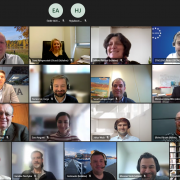
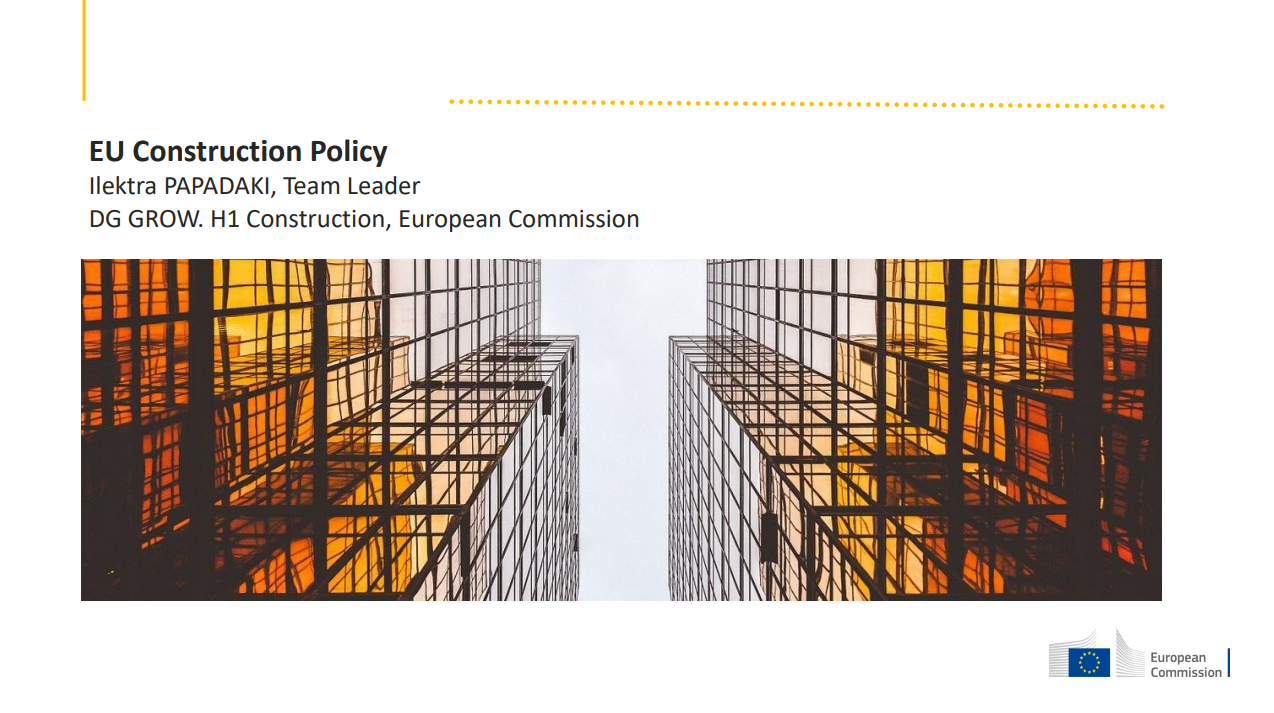
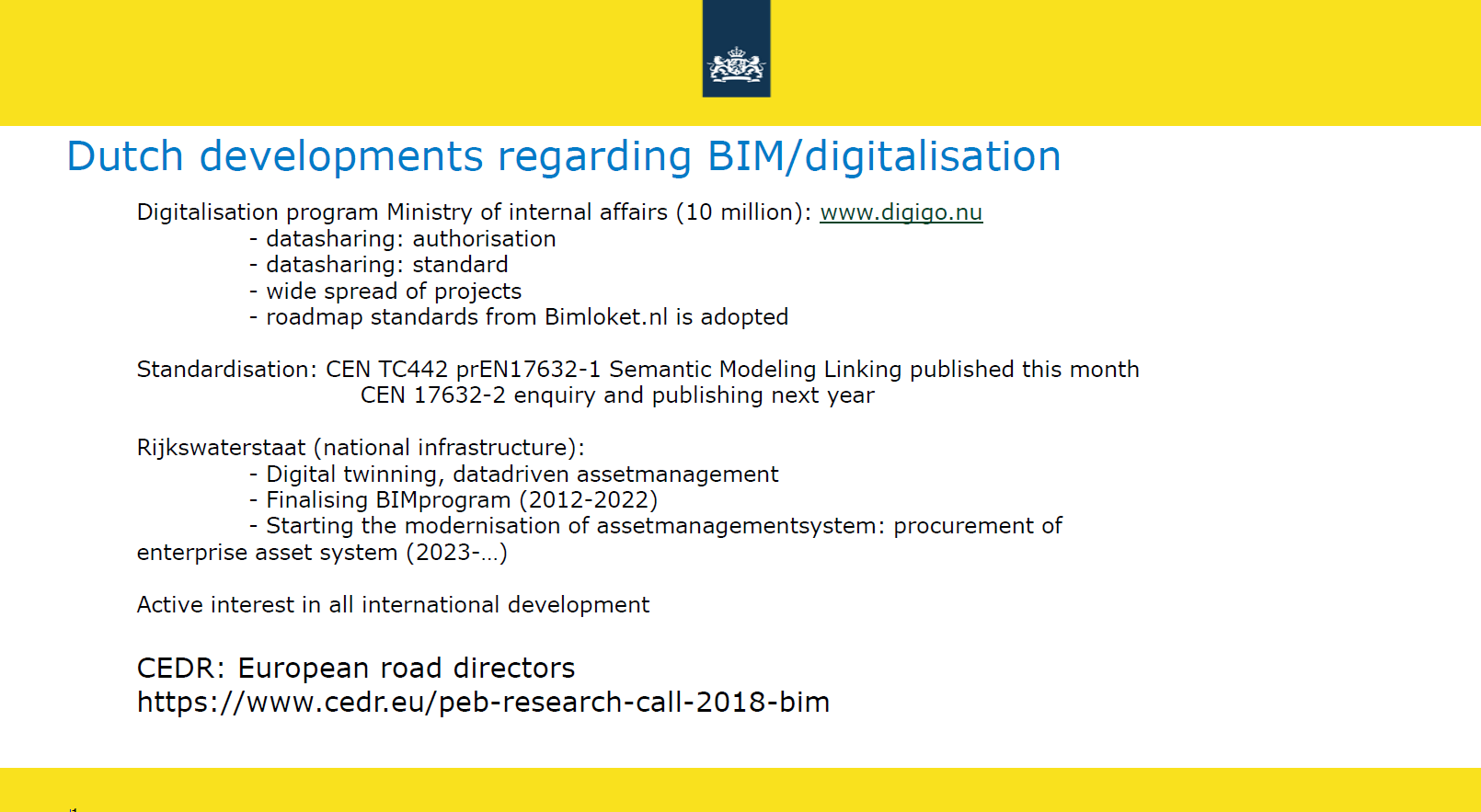


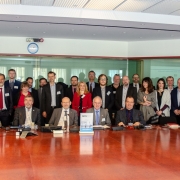
 During the General Assembly, the EU BIM Task Group appointed the new Steering Committee, which will lead the group’s work towards this goal. Dr. Souheil Soubra has been elected Chair of the EU BIM Task Group for the next two years. He is Director of the IT department at the Scientific and Technical Centre for Buildings (CSTB). Moreover, he is actively contributing to the French Digital Transition Plan, supported by the French Ministry for Ecological and Inclusive Transition and by the Ministry of Territorial Cohesion, in order to prepare a large-scale deployment of BIM in the French construction sector.
During the General Assembly, the EU BIM Task Group appointed the new Steering Committee, which will lead the group’s work towards this goal. Dr. Souheil Soubra has been elected Chair of the EU BIM Task Group for the next two years. He is Director of the IT department at the Scientific and Technical Centre for Buildings (CSTB). Moreover, he is actively contributing to the French Digital Transition Plan, supported by the French Ministry for Ecological and Inclusive Transition and by the Ministry of Territorial Cohesion, in order to prepare a large-scale deployment of BIM in the French construction sector.